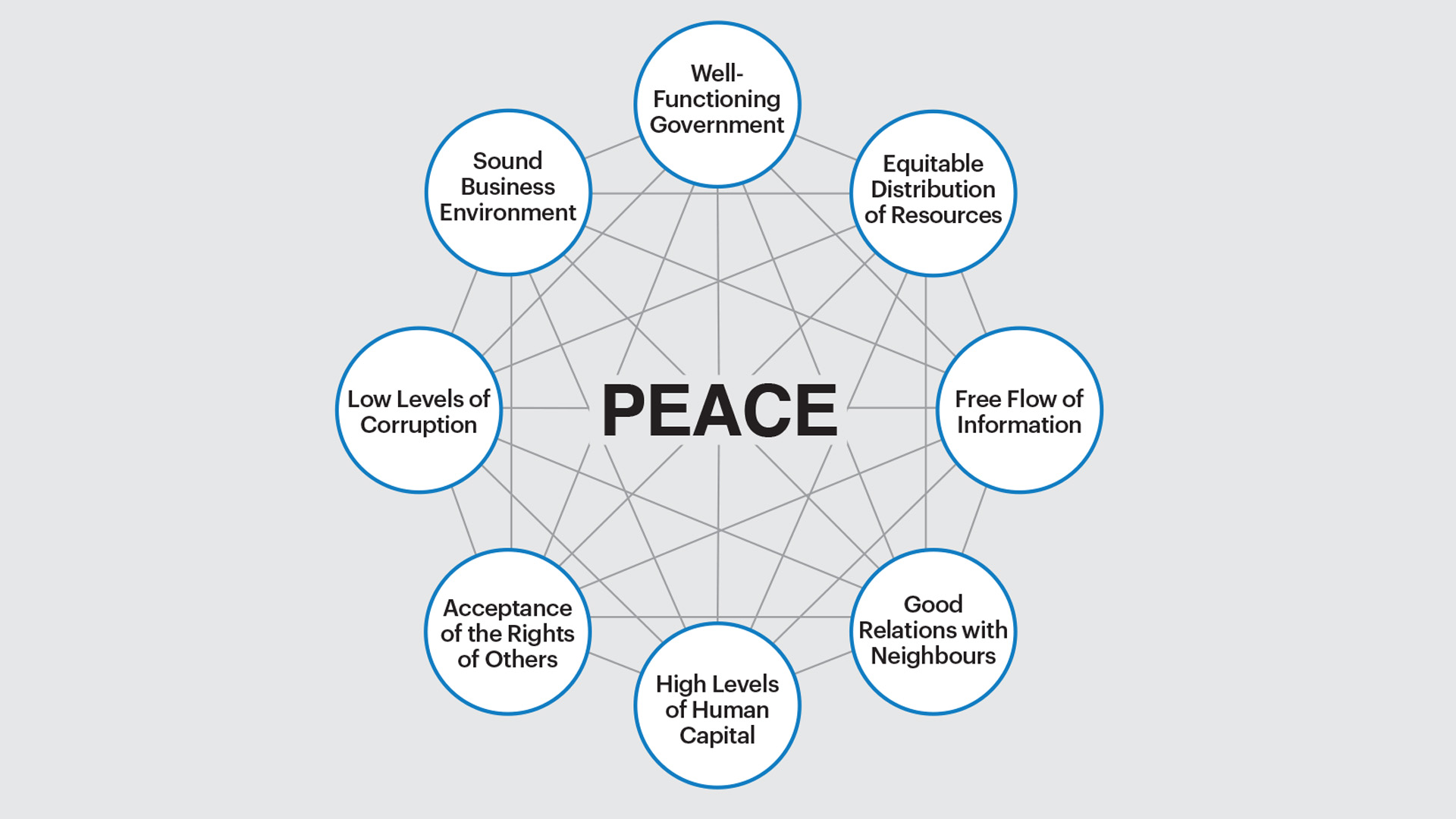In a recent interview with Singapore’s STORM-ASIA, Steve Killelea, IEP Founder & Executive Chairman, delved into the concept of peace, distinguishing between ‘positive’ and ‘negative’ peace, underscoring IEP’s commitment to redefining peace as a dynamic, measurable state that transcends the absence of violence.
Traditional views often equate peace with the absence of war or conflict. However, Killelea emphasises that this negative peace is insufficient for long-term stability. He argues that true peace, or Positive Peace, involves the presence of factors that foster societal well-being and resilience. These include strong institutions, equitable resource distribution, and societal trust, among others.

Through extensive research, IEP has identified eight interrelated pillars that underpin Positive Peace:
These 8 Pillars of Positive Peace collectively contribute to a society’s resilience against shocks and its capacity for sustainable development.
The distinction between positive and negative peace has profound implications for policy-making and international relations. For instance, countries focusing solely on reducing violence may neglect the underlying structures that prevent future conflicts. Conversely, nations that invest in the pillars of positive peace tend to experience more stable and prosperous conditions.
Killelea’s insights challenge individuals, organisations and governments to broaden their understanding of peace. Achieving Positive Peace requires a holistic approach that addresses systemic factors and promotes inclusive growth.
This article is based on Steve Killelea’s interview with STORM-ASIA, available at Positive Peace Versus Negative Peace.